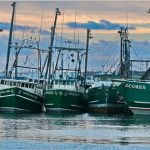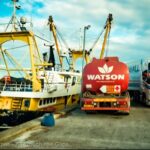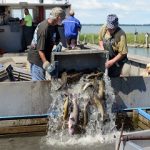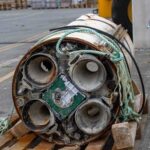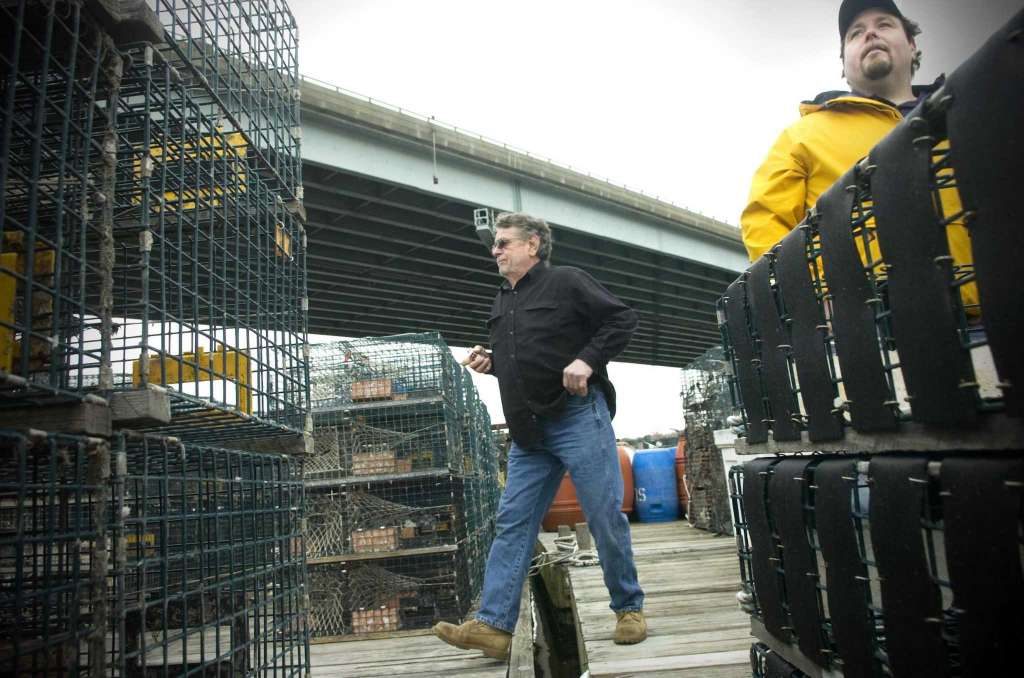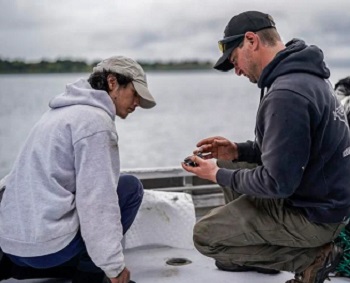 Lane Bolich first came to work in Alaska for the freedom and excitement that comes with being a fisher. A self-described adrenaline junkie, Bolich moved from his hometown in rural Washington state because he loves being on the ocean even in cold winter weather and it gave him the chance to make more money than back home. After working as a deckhand for two years on a family friend’s boat, Harmony, he took the wheel as captain this year at just 20 years old. Bolich is a rarity in an aging industry with high barriers to entry, equipment and access rights are costly, and increasing unpredictability as human-caused climate change alters marine habitats. As some fish populations dwindle and fewer people pursue the trade, fishers and conservation groups are actively working to bring in and retain the next generation of fishers through grants and training even as the industry continues to shrink in Alaska. 19 photos, >>click to read<< 09:38
Lane Bolich first came to work in Alaska for the freedom and excitement that comes with being a fisher. A self-described adrenaline junkie, Bolich moved from his hometown in rural Washington state because he loves being on the ocean even in cold winter weather and it gave him the chance to make more money than back home. After working as a deckhand for two years on a family friend’s boat, Harmony, he took the wheel as captain this year at just 20 years old. Bolich is a rarity in an aging industry with high barriers to entry, equipment and access rights are costly, and increasing unpredictability as human-caused climate change alters marine habitats. As some fish populations dwindle and fewer people pursue the trade, fishers and conservation groups are actively working to bring in and retain the next generation of fishers through grants and training even as the industry continues to shrink in Alaska. 19 photos, >>click to read<< 09:38
Daily Archives: September 27, 2023
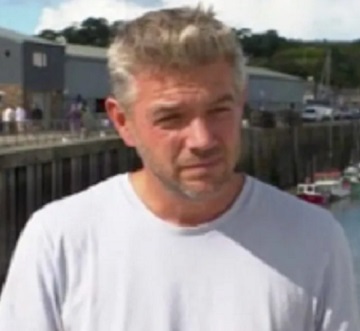
Consultation amid low crab and lobster numbers
Members of the fishing industry are being asked for their views to inform a plan to ensure crab and lobster are caught sustainably. It comes amid concerns crab and lobster populations could be “vulnerable” to over-fishing. The Department for Environment, Food & Rural Affairs (Defra) is running a public consultation on the issue. The consultation is part of the post-Brexit management of sustainable fishing stocks. Padstow inshore fisherman Johnny Murt said he was concerned about the impact of industrial fishing. He said he welcomed more regulation around lobster and crab fishing in Cornwall. Mr. Murt said inshore fishermen in Padstow had been forced to increase their gear in recent years to catch “an increasingly lower number of lobster and crab”. >>click to read<< 14:50
Athearn Marine Agency Boat of the Week: Complete RI Floating Fish Trap Company, Boats, Trucks, Forklifts
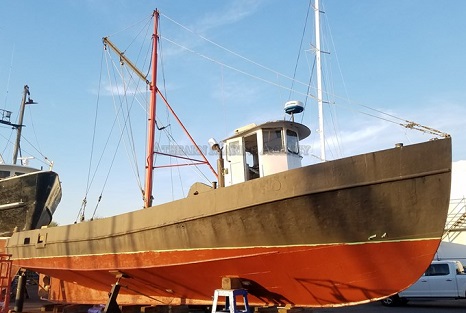 To review specifications, information, and 26 photos’, >click here<, To see all the boats in this series >click here< 12:55
To review specifications, information, and 26 photos’, >click here<, To see all the boats in this series >click here< 12:55

From Lobsters To Electricity, Offshore Wind Making Everything More Expensive
National Lobster Day is a good time to look at what Bidenomics is going to do to lobsters and the $400 million lobster industry. And it isn’t good. It isn’t good for electric users’ budgets either. Biden’s 30 GWs of offshore wind is catering to the left’s rush to “end fossil fuels” (which provide 80% of our energy) is wrongheaded. It is part of a costly, unnecessary, not well-thought-out transition to part-time, weather dependent, Middle Ages technology. Only a fool ends their primary energy or food source before it is fully replaced. Offshore wind towers harm lobsters in several ways. 30,000 MW of offshore wind will take 3,000 to 4,000 800 ft towers placed at least a mile apart in all directions, 2 to 5 miles is better. Those towers take the energy out of the wind, altering weather patterns. by Frank Lasee >>click to read<< 10:50
As climate change and high costs plague Alaska’s fisheries, fewer young people take up the trade
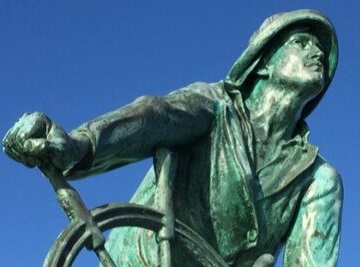
NE Fishery Management Council welcomes aboard Jackie Odell
The new face on the New England Fishery Management Council is no stranger to a group that advises on policy related to the region’s vital fisheries. That face belongs to Jacqueline “Jackie” Odell, who has been a longtime advocate and thought leader for the fishing industry as the two-decade executive director of the Northeast Seafood Coalition at 1 Blackburn Center. Odell was welcomed aboard the Newburyport-based council as it opened its latest meeting in Plymouth on Monday. She was administered the oath of office by NOAA Fisheries Regional Administrator Mike Pentony along with three members who were reappointed: John Pappalardo of Massachusetts, Daniel Salerno of New Hampshire, and Alan Tracy of Maine. Odell was appointed to her first three-year term to an at-large seat with the term running through Aug. 10, 2026. >>click to read<< 07:57

































